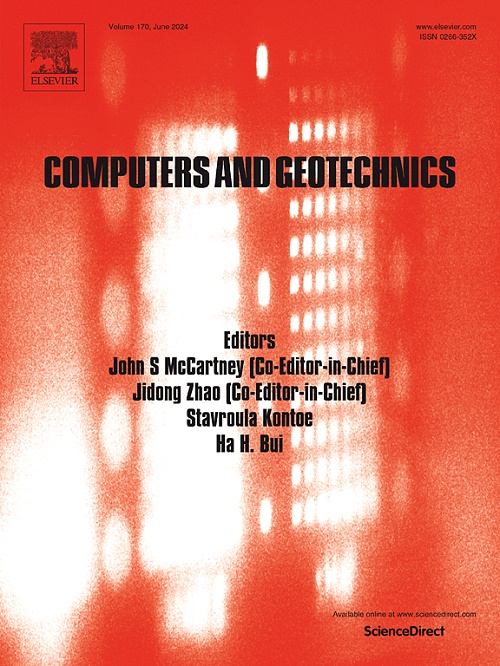Tracking the evolution of loess microstructure using micro-CT 3D reconstruction based on a soil-particle-aware model
IF 5.3
1区 工程技术
Q1 COMPUTER SCIENCE, INTERDISCIPLINARY APPLICATIONS
引用次数: 0
Abstract
The particle contours in the loess in-situ micro-CT test slices are always blurred by noise because the representative size of the mechanical test specimen is larger than the CT scanning area at adequate resolutions. An enhanced approach was proposed using convolutional neural networks and content-aware image restoration theory to construct a more precise 3D digital loess model. First, a training dataset was created by adding noise to clear CT slice images from fine tube loose soil specimens. Then, a conventional U-Net architecture neural network model was trained using this dataset to develop a soil-particle-aware model for high-noise micro-CT slice images of soil particles. Validation experiments, combining a small consolidation test apparatus and micro-CT scanning equipment, were conducted to track the microstructural evolution of air-fall loess specimens under consolidation pressure using the proposed method. The results indicate that the proposed method effectively identifies loess particle contours and accurately determines the particle size distribution curves under varying consolidation pressures. The issue of missing small particles in reconstructed models was addressed successfully. Finally, the mechanical coordination number, contact force distribution density, and peak pore throat diameter of air-fall specimens developed under vertical consolidation pressures were analysed using precise 3D digital models and the discrete element method.
基于土壤颗粒感知模型的微ct三维重建跟踪黄土微观结构演变
在适当的分辨率下,黄土原位微CT测试片的颗粒轮廓由于力学试件的代表性尺寸大于CT扫描区域,常常受到噪声的影响而模糊。提出了一种利用卷积神经网络和内容感知图像恢复理论构建更精确的三维数字黄土模型的改进方法。首先,通过加入噪声对细管松散土标本CT切片图像进行清除,建立训练数据集;然后,利用该数据集训练传统的U-Net结构神经网络模型,建立土壤颗粒高噪声微ct切片图像的土壤颗粒感知模型。结合小型固结试验装置和微型ct扫描设备,利用所提出的方法对固结压力下风落黄土试样的微观结构演化进行了验证实验。结果表明,该方法能有效识别黄土颗粒等高线,准确确定不同固结压力下的粒度分布曲线。成功地解决了重建模型中缺失小颗粒的问题。最后,采用精确的三维数字模型和离散元法,对垂直固结压力下空气沉降试件的力学配位数、接触力分布密度和最大孔喉直径进行了分析。
本文章由计算机程序翻译,如有差异,请以英文原文为准。
求助全文
约1分钟内获得全文
求助全文
来源期刊

Computers and Geotechnics
地学-地球科学综合
CiteScore
9.10
自引率
15.10%
发文量
438
审稿时长
45 days
期刊介绍:
The use of computers is firmly established in geotechnical engineering and continues to grow rapidly in both engineering practice and academe. The development of advanced numerical techniques and constitutive modeling, in conjunction with rapid developments in computer hardware, enables problems to be tackled that were unthinkable even a few years ago. Computers and Geotechnics provides an up-to-date reference for engineers and researchers engaged in computer aided analysis and research in geotechnical engineering. The journal is intended for an expeditious dissemination of advanced computer applications across a broad range of geotechnical topics. Contributions on advances in numerical algorithms, computer implementation of new constitutive models and probabilistic methods are especially encouraged.
 求助内容:
求助内容: 应助结果提醒方式:
应助结果提醒方式:


